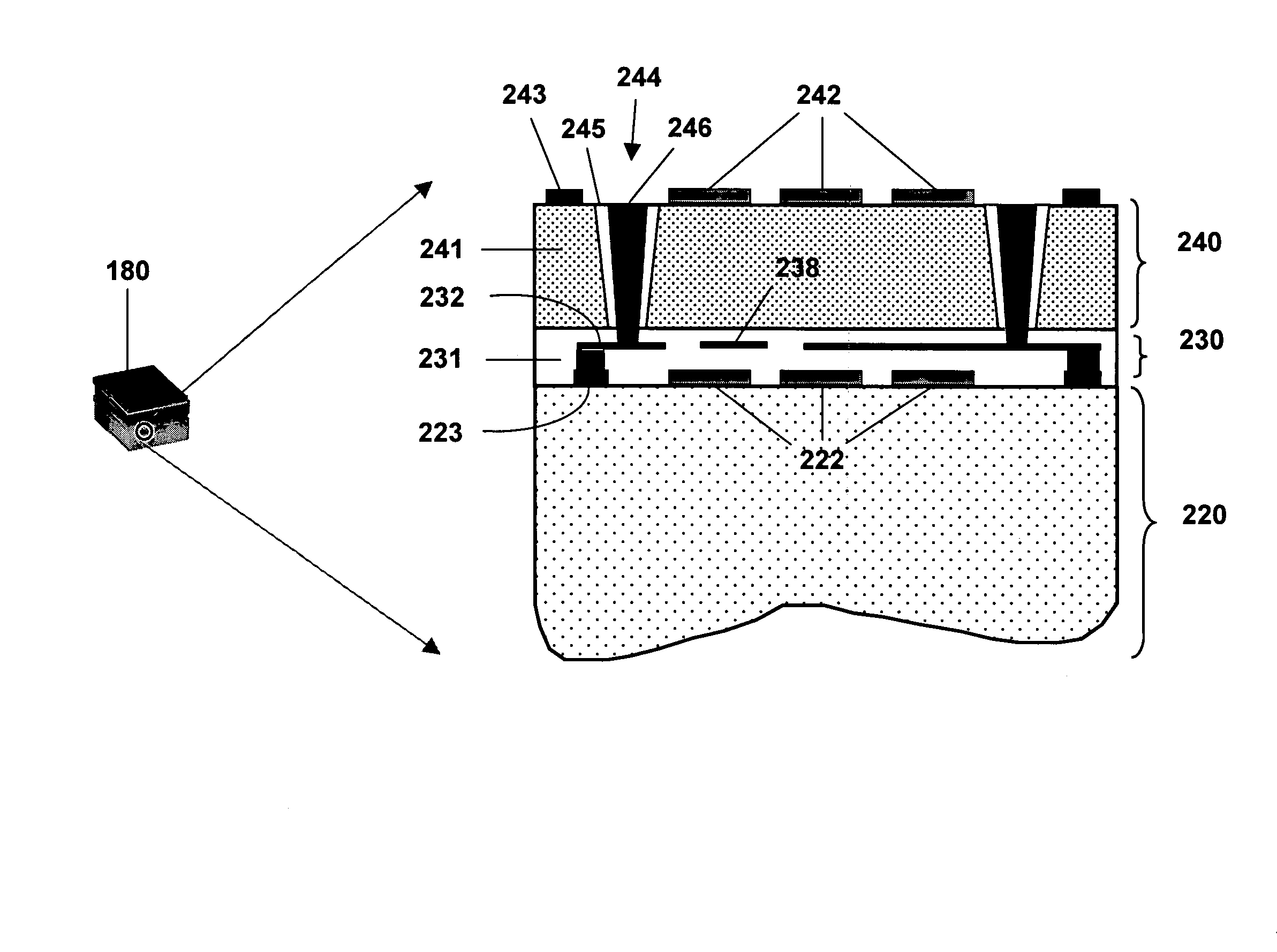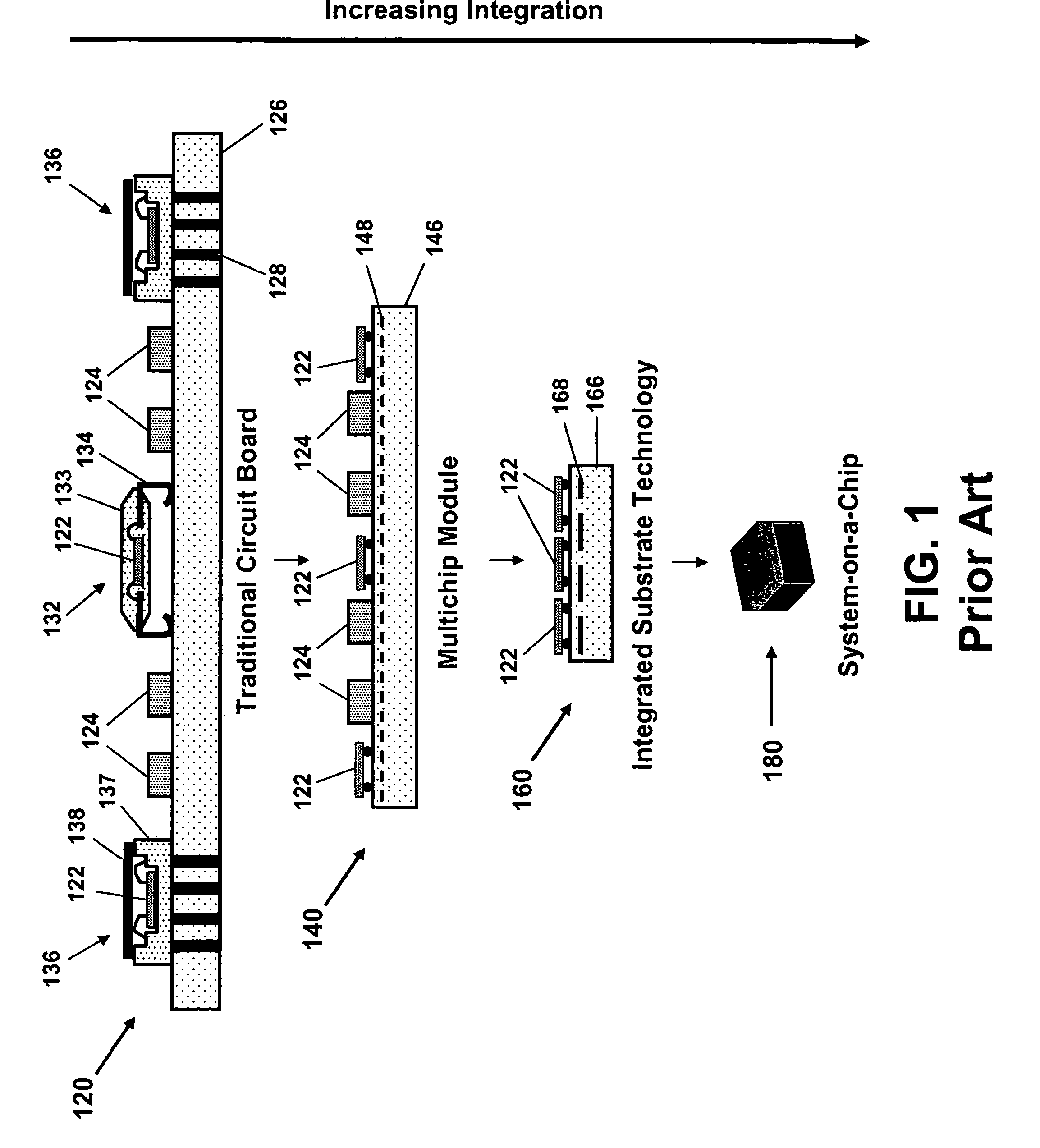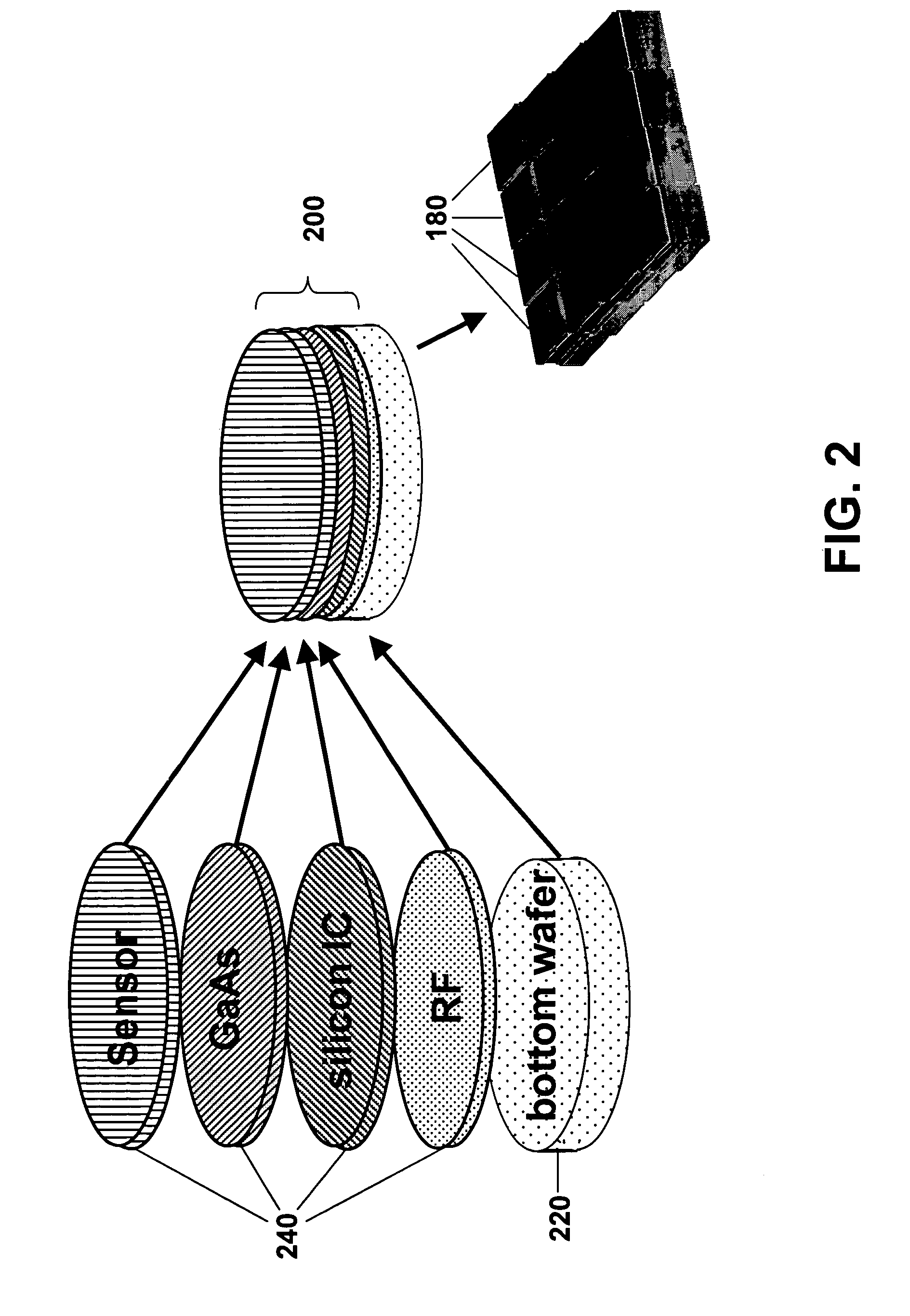Heterogeneously integrated microsystem-on-a-chip
a microsystem and integrated technology, applied in the field of microsystem packaging, can solve the problems of degrading the high frequency electrical performance of in-plane hybrid circuits, affecting the performance of microsystems, and affecting the quality of microsystems
- Summary
- Abstract
- Description
- Claims
- Application Information
AI Technical Summary
Benefits of technology
Problems solved by technology
Method used
Image
Examples
Embodiment Construction
[0023]In FIG. 2 is shown an example of the microsystem-on-a-chip package of the present invention in which different device technologies can be heterogeneously integrated in a 3D stack as a single chip. The stacking method can be used to integrate widely different materials used in the IC and MEMS industries, such as silicon, compound semiconductors, glass, and ceramics, and different types of devices like CMOS, memory, photonic, sensors, RF and passive components by a batch process at the wafer level. Any significant stresses associated with thermal expansion mismatch between different materials in the layers of the stack 200 can potentially cause delamination, cracking or bending. Therefore, a bottom wafer 220 of normal thickness can be a relatively rigid and the stacked wafers 240 can be thin so that their individual contribution to thermal expansion mismatch stresses are minimal. On top of the bottom wafer 220, the series of thinned wafers 240 can be stacked, glued and electrica...
PUM
 Login to View More
Login to View More Abstract
Description
Claims
Application Information
 Login to View More
Login to View More - R&D
- Intellectual Property
- Life Sciences
- Materials
- Tech Scout
- Unparalleled Data Quality
- Higher Quality Content
- 60% Fewer Hallucinations
Browse by: Latest US Patents, China's latest patents, Technical Efficacy Thesaurus, Application Domain, Technology Topic, Popular Technical Reports.
© 2025 PatSnap. All rights reserved.Legal|Privacy policy|Modern Slavery Act Transparency Statement|Sitemap|About US| Contact US: help@patsnap.com



